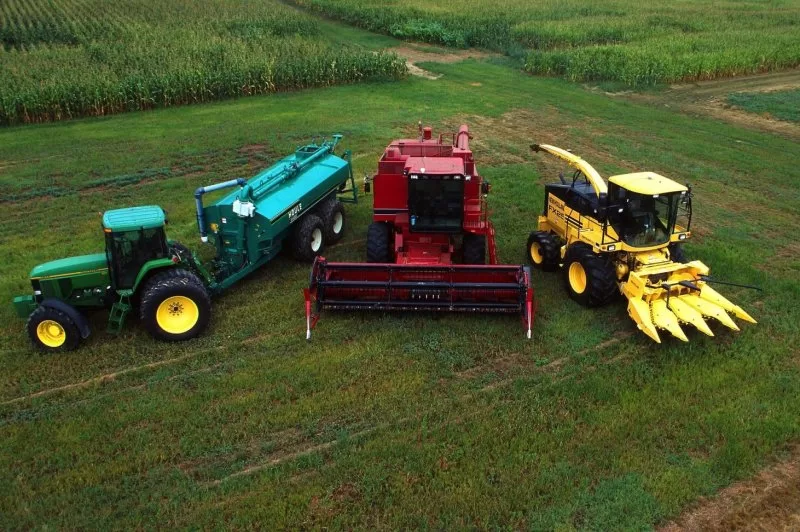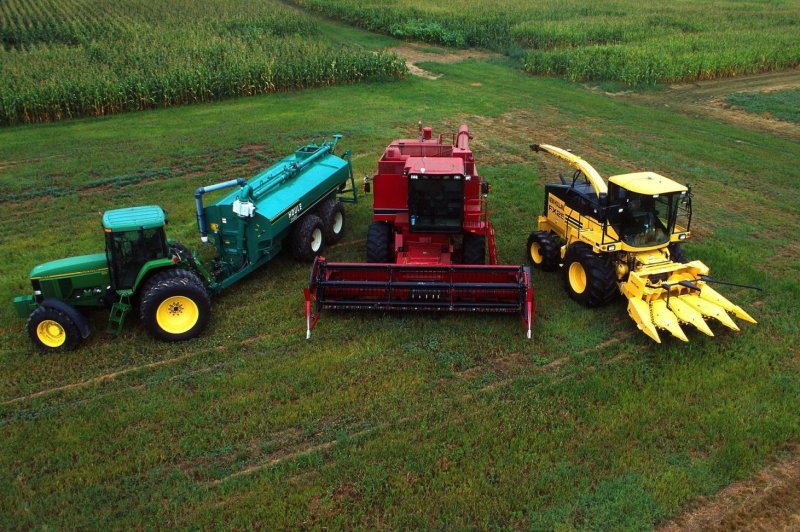Banks are where farmers and ranchers usually go first to get loans to cover short-term operating costs and buy new equipment, but it’s getting harder for them to secure loans and pay them off. Photo by
PixabayAug. 1 (UPI) — Farmers say the nation’s food security is jeopardized, as they face potential catastrophe if federal lawmakers don’t enact a replacement for the increasingly obsolete 2018 Farm Bill.
“Unless conditions change, we’re facing a perfect storm, although I don’t think it will be fully understood until early next year when farmers are unable to secure loans,” Dana Allen-Tully, president of the Minnesota Corn Growers, told the House Agriculture Committee late last month.
She said “plummeting crop prices, high cost of production, doubling interest rates, natural disasters and tightening credit are some of the key culprits” making it very difficult for the nation’s farmers and ranchers to continue producing food without the help of a new Farm Bill.
A shortfall in farm production could prove catastrophic for the nation’s consumers and the global trading partners who depend on U.S. agriculture to feed their respective populations, Allen-Tulley said.
Congress is tasked with enacting a new Farm Bill every five years to help protect the nation’s farmlands and farmers, while ensuring food production continues.
The 2018 Farm Bill initially expired in 2023, but lawmakers so far have delayed replacing it with an update measure that addresses the agricultural industry’s current needs.
Allen-Tulley cited the U.S. Department of Agriculture recently reporting farm and ranch income will fall sharply by about $43 billion in 2024 as costs greatly outpace revenues.
Projected losses
She said all farmers and ranchers are facing projected losses of at least $150 per acre, including her family farm in Minnesota.
The break-even point for corn farmers like her family is to produce 219 bushels per acre, which is 27% higher than the 10-year average, and 56 bushels per acre for soybeans, which is 12% higher than the10-year average.
“This is true across all commodities,” Allen-Tulley said. “Farm and ranch families need help” because “prices don’t cover our costs.”
Production costs for farmers are well above market prices for the foods they produce, farmer and chairman of the American Cotton Producers David Dunlow told the House Agricultural Committee.
“We’re hanging on by a thread,” Dunlow told the committee.
“I have never experienced a worse time in my 40 years of growing,” Dunlow said. “The stress has taken a toll on my health as I wonder how our operation will survive.”
Dunlow farms on 3,800 acres in North Carolina, with most of the farming occurring on land leased from others.
He said his farming operation grows cotton, peanuts, soybeans, corn and wheat “mostly on rented land.”
Without an updated Farm Bill that provides farmers with a viable price for agricultural commodities and suitable crop insurance that provides a safety net against crop damage from storms, pests and other dangers, Dunlow said the nation’s farmers are imperiled.
Current costs no longer current
The current reference prices for agricultural commodities, like cotton, corn and soybeans, were established six years ago in the 2018 Farm Bill and no longer reflect current costs.
The reference price has not kept up with inflation and other rising costs, which means farmers no longer have a safety net to offset losses by accessing federal Agriculture Risk Coverage and Price Loss Coverage programs.
“The results have been back-to-back years of losses on our farm,” Dunlow said. “Next year could be just as bleak.”
Those programs enable farmers to obtain payments for crop production the ensure they receive at least the federal reference price for respective commodities, such as a bushel of corn or a pound of cotton.
Federal lawmakers in the House and Senate didn’t replace the 2018 Farm Bill with a new measure, as required every five years. Instead, they extended the 2018 Farm Bill for another year and are considering extending it again because of differences in House and Senate versions of a replacement Farm Bill.
“Another straight extension of the current law is unacceptable,” Dunlow said. “I may no longer be able to farm. Many others are in the same situation.”
Allen-Tulley agreed.
“A Farm Bill extension will not stop the hemorrhaging and even a new Farm Bill with a strong safety net may not be timely or sufficient,” she said. “I pray Congress will pass a Farm Bill this year because it will help in the long run.”
The nation’s farmers and ranchers need “real relief before the end of this year,” Dunlow added. “We can’t wait any longer.”
Farmers and ranchers say they can’t afford very costly new equipment, largely because the cost of feed, seed and planting corps outweighs the market price of the goods produced.
Higher costs
They cite energy costs, inflation, higher interest rates and other factors that have made it virtually impossible for them to bring new equipment online that might help scale up production.
Dunlow said the cost of a new cotton picker in 1990 was $40,000 and cotton sold for 74 cents a pound. Today, a new cotton picker costs $1.1 million, but cotton still sells for about the same price it did nearly 35 years ago. In fact, it was quoted at 69 cents a pound on Thursday.
Banks are where farmers and ranchers usually go first to get loans to cover short-term operating costs and buy new equipment, but it’s getting harder for them to secure loans and pay them off.
“Agricultural bankers feel like they’re looking over the cliff in regard to the agricultural economy,” Tony Hotchkiss, chairman of the American Bankers Association’s Agriculture and Rural Bankers Committee, told the House Agriculture Committee.
He cited almond growers in California refinancing their debt and finding that low commodity prices make it challenging for them to pay off the new debt obtained to pay off the old debt.
“We hope this is an outlier and not a growing trend,” Hotchkiss said.
The USDA is projecting farm income to drop by 25% from 2023 to 2024, he added, which means the trend of refinancing debt might become more common among farmers and ranchers and more challenging to pay off their debts.
“Some regions will feel the effects sooner than others, but they all will feel it,” Hotchkiss said.
He suggested several changes to government policy could be included in a new Farm Bill.
Increasing reference prices for agricultural products, making crop insurance more affordable, and creating a national process to streamline federal guaranteed loan programs for farmers and ranchers could provide the type of safety net needed to protect that nation’s agriculture producers, Hotchkiss said.
Members of the House Agriculture Committee have reported out a 2024 farm Bill, but the Senate has not produced its version of bill, as required by the legislative process for the measure.
Once both chambers have reported out their respective measures, a conference committee will hammer out any differences to produce a final bill that each chamber can approve and send to President Joe Biden to sign into law.
That might not happen this year, though, which farmers and ranchers say could be catastrophic for their respective farming operations and bad for the nation’s food supply.

